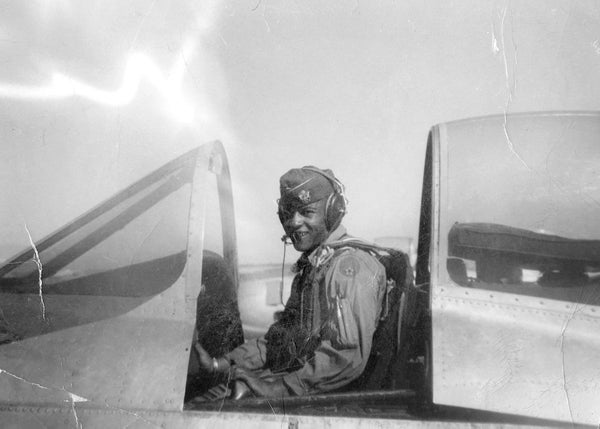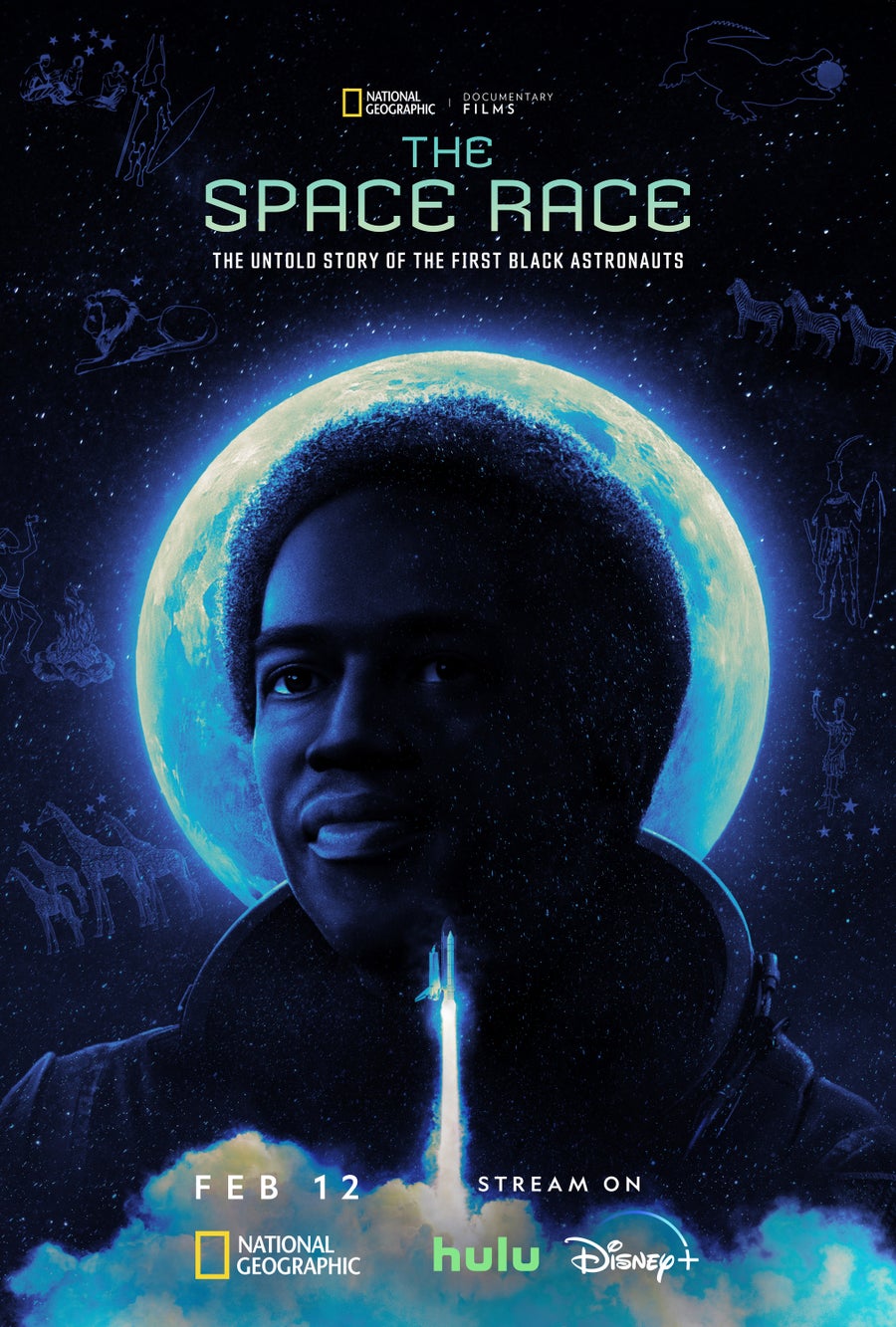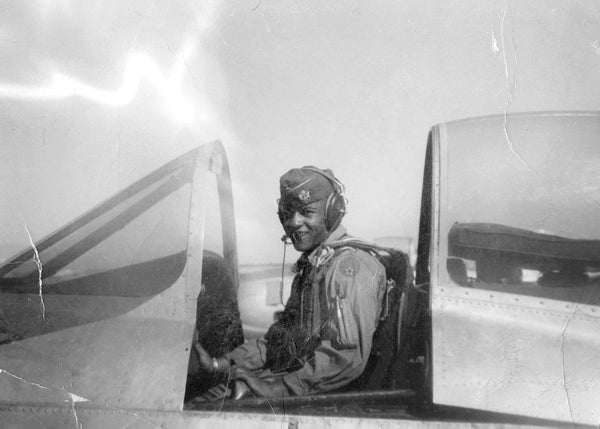The Hidden Story of Trailblazing Black Astronauts at NASA
A new film details the history of Ed Dwight and NASA’s first Black astronaut candidates

Air Force Captain Ed Dwight in the cockpit at the beginning of his flight training in 1954.
Early astronauts had to have the “right stuff” to tackle the daunting, unknown task of venturing into space. This phrase often alludes to bravery, dedication, determination and other attributes associated with the difficult job of riding a rocket off Earth. But in the early days of the space race, the right stuff also seemingly included being white, male and a military test pilot.
The famous astronauts of the 1960s Apollo program, such as Buzz Aldrin, Alan Shepard and Neil Armstrong, certainly fit that description. These days, the space-traveler ranks are a lot more diverse—Black astronauts such as Victor Glover and Jessica Watkins are preparing for NASA’s return to the moon under the Artemis program, for instance. But the true story of Black astronauts at NASA goes back all the way to the start of the American space program.
NASA was created in 1958 as the U.S. and the Soviet Union raced to one-up each other in feats of space exploration, and the first set of American astronauts, known as the Mercury Seven, were chosen shortly afterward. When John F. Kennedy ran for president in 1960, civil rights leader Whitney Young persistently requested that a Black astronaut be included in the next round of selection. Even with Kennedy’s support, the criteria to be considered as an astronaut then were intense and, because of existing prejudices and structural inequalities, eliminated most Black candidates—except for Ed Dwight.
On supporting science journalism
If you’re enjoying this article, consider supporting our award-winning journalism by subscribing. By purchasing a subscription you are helping to ensure the future of impactful stories about the discoveries and ideas shaping our world today.
Dwight was a young Air Force test pilot in 1961 when he was selected as the first Black astronaut candidate. During his military training, he had faced intimidation and discrimination but persevered. Once selected as an astronaut candidate, Dwight went on a lengthy press tour in which he became the face of progressive politics at NASA. Yet Dwight’s name was seemingly relegated to history when Kennedy was assassinated in 1963 and political support for diversity in the astronaut program vanished. He wasn’t chosen as an official astronaut in the agency’s third cohort (known as “the Fourteen”), and despite protests from civil rights activists, no Black astronauts flew until the space shuttle program, more than a decade later. “Had all other things been equal, I would have made it to the moon,” Dwight said in The Space Race, a recent film from National Geographic. “I had the capability, and I was not given that opportunity.” The film goes into detail about Dwight’s story and the origins of diversity in NASA’s astronaut program.

The Space Race is a new film from National Geographic that chronicles the history of Black astronauts in the early days of the space program.
Courtesy of National Geographic
After Dwight, some other Black astronaut candidates were selected, but they were relegated to classified programs, many still unknown to the public or never even officially recorded—and none of those candidates made it to space. “Space really allows us to realize the hope that’s within all of us as human beings, and so to see a Black man in space during that period of time, it would have changed things,” former astronaut Bernard Harris said in the film.If Dwight had the chance to fly, an entire generation of kids might have seen themselves in him; instead, as former astronaut and NASA administrator Charlie Bolden said in the film, “Nobody doing that stuff looked like me.”
Meanwhile the Soviet Union took advantage of American racial turmoil by cultivating a diverse fleet in their own program for propaganda purposes; as a result, the first astronaut of color to fly was the Cuban cosmonaut Arnaldo Tamayo Méndez, and the first woman in space was Soviet cosmonaut Valentina Tereshkova.
The space shuttle era, beginning in the late 1970s, finally brought a diverse group of American astronauts to space. This cohort included Guy Bluford, who became the more widely known first African American in space after he took part in NASA’s STS-8 mission in 1983, two decades after Dwight’s service. “I made it because Ed Dwight did his thing…. On STS-8 my biggest concern was to do the best job possible,” Bluford said in the film. “I was less concerned about the hoopla…, but I wanted to make sure I did a good enough job that when I got down, people would say, ‘Bluford did a good job, and we can fly African Americans, and we don’t have to sweat it.’” Mae Jemison became the first African American woman in space soon after, followed by Stephanie Wilson, Joan Higginbotham and others. As Bolden said in the film, “Firsts are not important if there are no seconds and thirds and fourths.”
Now NASA is set on returning to the moon. The uncrewed Artemis I test looped around Earth’s natural satellite in late 2022, and the first crewed flight—Artemis II, which will follow the same path around the moon for an approximately 10-day trip—is set for September 2025. About a year later NASA plans to land a crew near the lunar south pole in Artemis III. A substantial goal for this program is to send the first woman and first person of color to the moon, righting the injustices from the first era of lunar exploration half a century ago.
The already announced crew of Artemis II includes Victor Glover, an experienced pilot and astronaut with substantial time spent onboard the International Space Station. Echoing Bluford’s sentiments about his first trip to space decades earlier, Glover is wholly focused on a successful mission despite the landmark nature of the program and the fact that he will, in a sense, become the first Black man to travel to the moon. Leland Melvin, a retired space shuttle astronaut and executive producer on the new film, emphasized the historical nature of the upcoming lunar mission. “We’re going to have a woman, a Black man, a white man and a Canadian going to the moon in about a year and a half, on the back of the work that’s been done by Dwight,” Melvin says..”
The real goal is to get to a point where diverse astronauts are no longer newsworthy for their identities. “I get so tired of being asked about being the first Black astronaut to live on the space station or the first Black astronaut to go around the moon or assigned to go around the moon…. Don’t get me wrong—I want to get it done. But it’s 2024,” Glover says. “I want it to get to the point where it just is. It’s not a stunt. It’s not for publicity. It’s just how we do business.”
Last month, more than half a century after his initial selection at NASA, Ed Dwight finally reached space. He didn’t fly for the agency but rather as a private astronaut onboard Blue Origin’s NS-25 mission, a commercial suborbital trip just past the edge of space. At 90 years old, Dwight became an official astronaut—and the oldest person ever to reach space.

